Synthesis for June 28, 2000
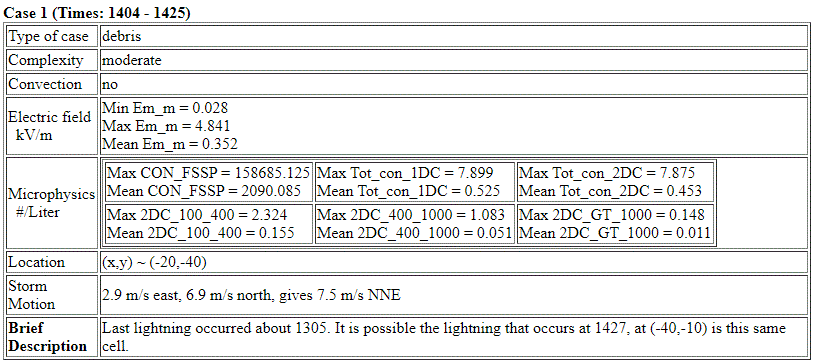
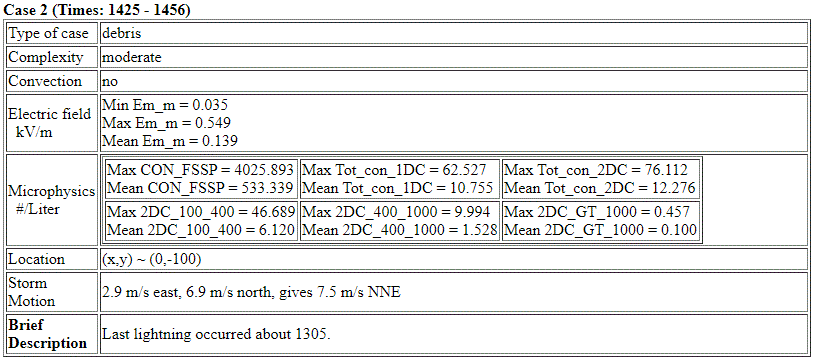
Flight Summary (Flight 2) (Anvil Day)
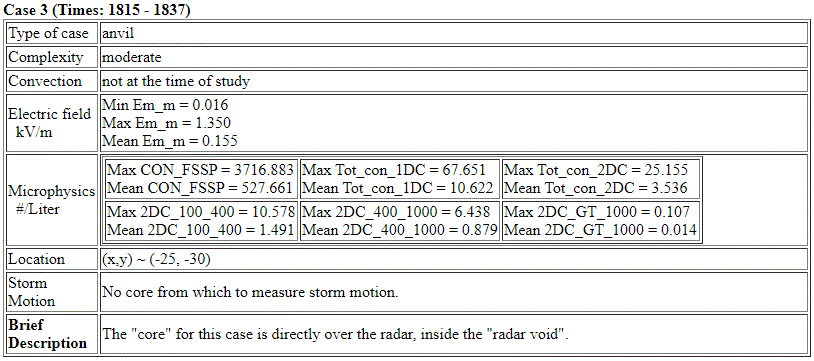
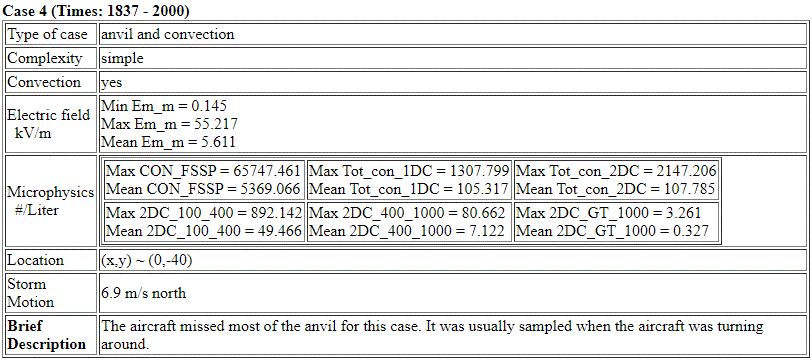
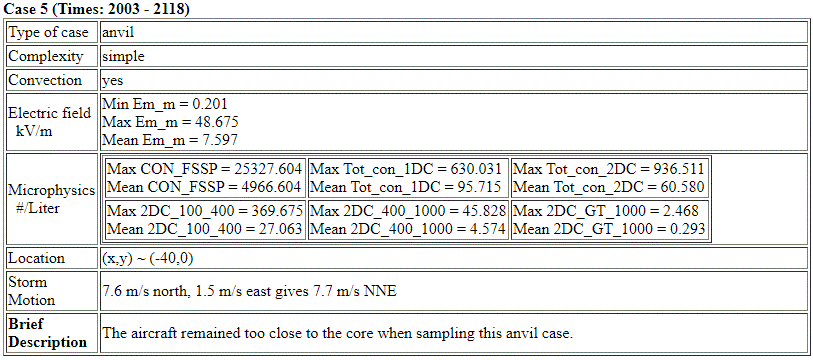
Summary for June 28, 2000
Investigator: (S. Lewis)

Flight 1 - 1404 to 1510
Brief Summary
The aircraft arrived too late for anvil decay studies. Although it is a good case for showing that the fields an hour after last lightning were small.

Everything is weak.
There were weak fields and small particle concentrations an hour after the last CG.
Full Description

There is a single flash at 1430 that appears to be associated with the last bits of the northern most cell. The lightning starts again at 1445 - 1630 ++. This lightning is again occurring "at the head of the line" in a region of new convection.
The Electric fields were small for this flight. The MER plots show that during this flight the aircraft did not fly through anything much higher than 15 or 20 dBZ, and the echo tops at the flight location were between 10 and 13 km. But Ez <1 KV/m and N30 ~1-10/L and N1 ~.01 to 0.1 /L.

This is another questionable call, is it an anvil or is it a convective debris case? I would argue that the area that the aircraft flew through was convective debris.
Flight 2 - 1815 to 2132
Case 3
All passes in these active cells had |E| fields of 10 -15 KV/m or more. Lots of lightning in these storms even where the A/C flew. The flight may not be good for examining decay of |E| with space or time for anvils specifically. It does show that when |E| is >10 KV/m when total 2dc >~10^2 and 2dc > 1mm is >~10^0, and shows decay of convection with anvil.

Case 4
As they come out of the spiral they enter the cell to the south which started up at about
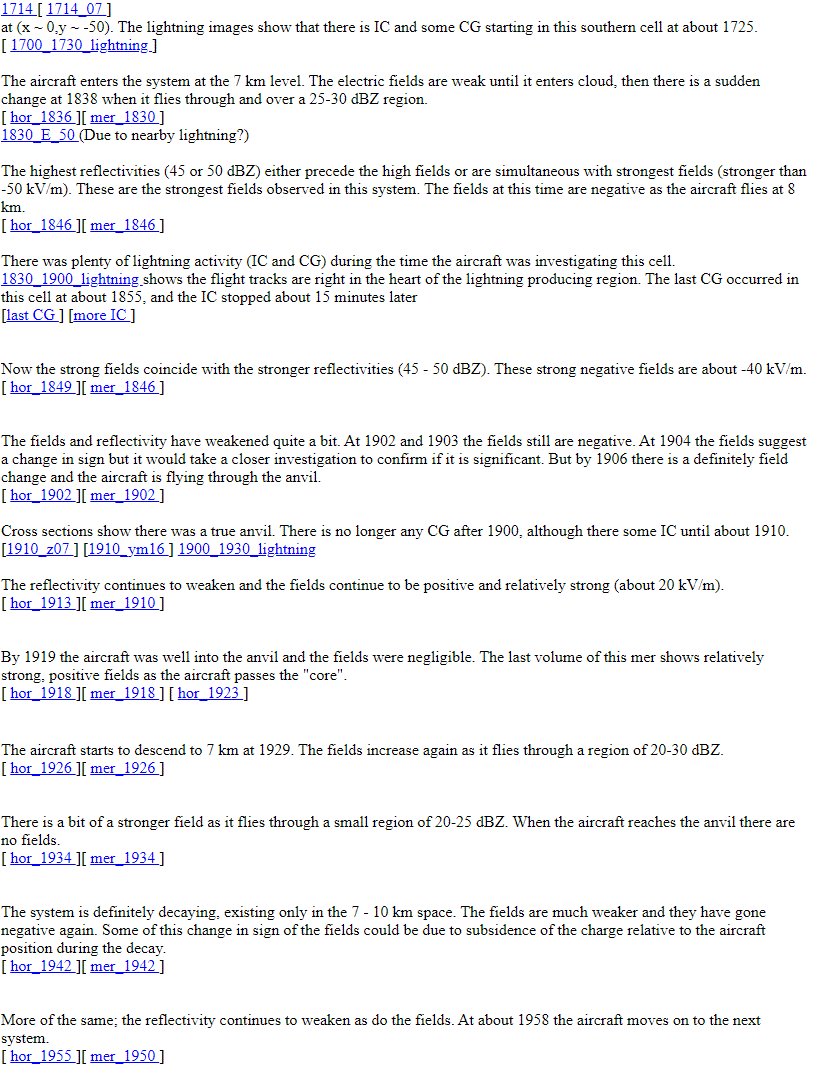
This is a good system to study the evolution of a storm, but the aircraft did not start flying into the anvil until the storm had started to decay. As an ABFM case, the aircraft does fly into the anvil (although not all the way through, therefore, not a priority case). We definitely see the system going from strong to weak fields. We also see the fields turning on and off at the cloud edge. It is probably safe to assume the fields are weaker in the anvil, and that those fields in the anvil mimic the convection.
Case 5
A new system (2 or 3 cells) began to form at about 1929 at (x~ - 50, y~0) between previous systems.

It was into this anvil that the aircraft flew, making several passes from about 2000 to 2100.
The fact that these systems don't move much would suggest that several of those legs went through the "same air". The 4km radar images show that the reflectivity goes at least down to the 4km level in much of this last series of maneuvers. The aircraft arrived at this cell about the same time the lightning activity started in the cell. The lightning activity started to decrease about the time the aircraft left the region.
At 2006, the aircraft flew at an altitude of about 9 km. The fields became more strongly negative (-50 kV/m) when inside the cloud. The CAPPIs show there were stronger reflectivities NE of the flight track at lower levels.
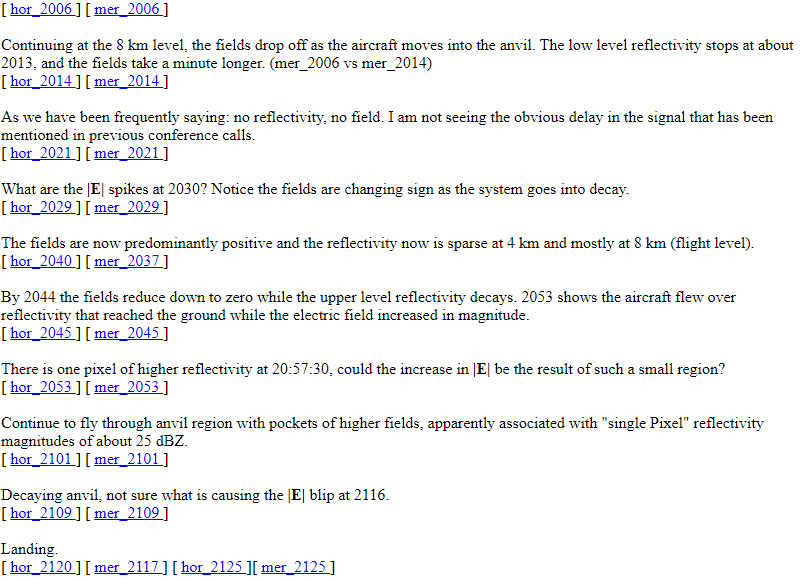
The 4km level would suggest a slow NE motion of the reflectivity. The 10km level would suggest a motion to the SW, I suspect this could be the anvils blowing off in that direction.
This is an example of a decaying storm, but I am not sure enough anvil work was done to satisfy the ABFM requirements.


